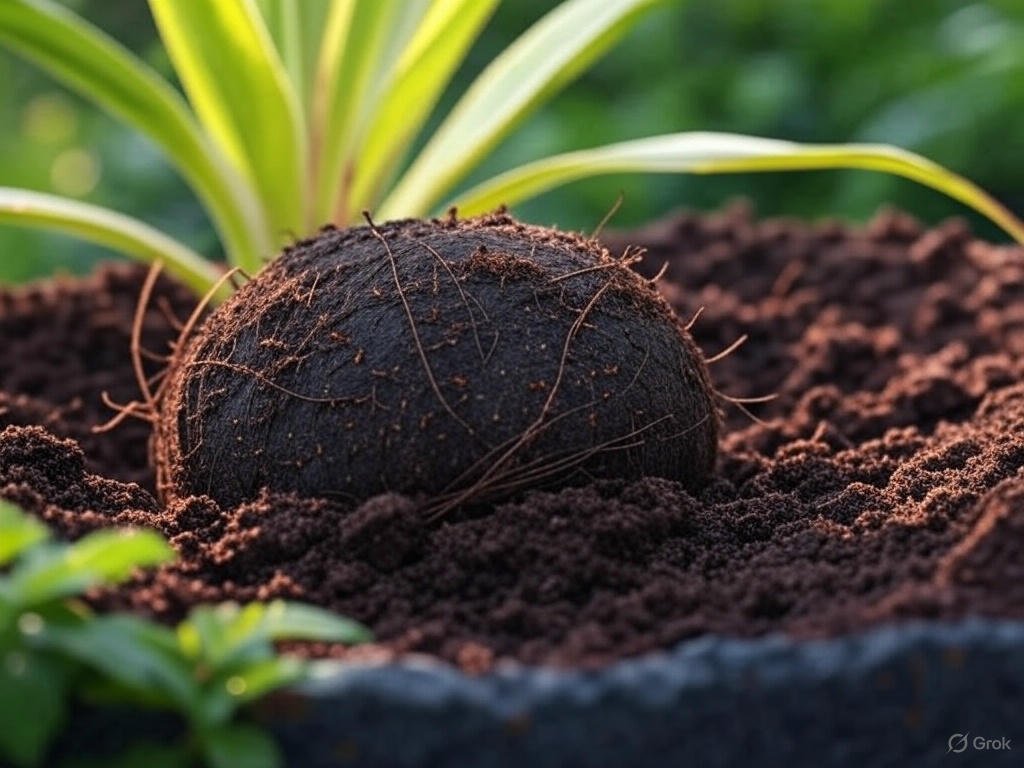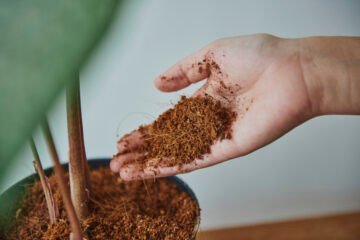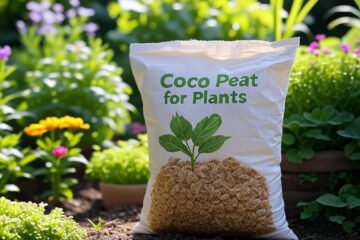
How to use cocopeat in plants?
7 Revolutionary Ways to Transform Your Garden with Cocopeat: The Ultimate Guide for Plant Enthusiasts
Introduction
Are your plants struggling to thrive despite your best efforts? The secret might be in the growing medium you’re using. Enter cocopeat – the sustainable, versatile growing medium that’s revolutionizing home gardening and commercial cultivation alike. Made from coconut husks, this eco-friendly alternative to traditional soil has gained immense popularity among gardening enthusiasts and professional horticulturists. In this comprehensive guide, we’ll explore everything you need to know about using cocopeat effectively to dramatically improve plant health, growth, and yield. Whether you’re a seasoned gardener or just starting your green journey, these expert techniques will transform your gardening experience almost overnight.
What Exactly Is Cocopeat and Why Is It a Game-Changer?
Cocopeat, also known as coco coir or coconut pith, is a natural fiber extracted from coconut husks during coconut processing. Once considered a waste product, it’s now recognized as a superior growing medium with remarkable properties. Unlike peat moss, which is harvested from endangered bog ecosystems, cocopeat is a renewable resource that helps reduce environmental impact while delivering exceptional results for your plants.
The standout qualities that make cocopeat a gardener’s dream include:
- Exceptional water retention – Holds up to 8-10 times its weight in water
- Superior aeration – Provides oxygen-rich environment for root development
- pH neutrality – Creates an ideal foundation for nutrient absorption
- Pest resistance – Naturally repels many common garden pests
- Sustainable sourcing – Reduces waste and environmental impact
7 Powerful Ways to Use Cocopeat in Your Garden
1. Create the Perfect Seed Starting Medium
Cocopeat creates an ideal environment for germination with its perfect balance of moisture retention and aeration. To use cocopeat for seed starting:
- Rehydrate compressed cocopeat blocks by soaking them in water until fully expanded
- Fill seed trays or small pots with the moistened cocopeat
- Plant seeds at appropriate depth according to package instructions
- Cover lightly with additional cocopeat
- Maintain consistent moisture without overwatering
The fine texture of cocopeat allows delicate seedling roots to establish easily, while its water retention properties ensure seeds remain consistently moist during the crucial germination period. Research shows that seeds germinated in cocopeat often emerge 1-3 days faster than those in conventional soil.
2. Supercharge Your Potting Mix
Create a premium potting mix by combining cocopeat with other ingredients for optimal plant growth:
Basic Cocopeat Potting Mix Formula:
- 60% cocopeat
- 20% perlite or pumice (for drainage)
- 10% compost or worm castings (for nutrients)
- 10% vermiculite (for additional water retention)
This balanced mixture provides the perfect environment for container plants, offering excellent drainage while retaining sufficient moisture between waterings. For acid-loving plants like azaleas or blueberries, add a tablespoon of elemental sulfur per gallon of mix to lower the pH.
3. Revolutionize Your Hydroponics Setup
Cocopeat has become a favorite medium for hydroponic growers due to its excellent structural stability and water management properties. In hydroponic systems:
- Use cocopeat as a standalone growing medium in net pots or containers
- Combine with clay pellets in a 70:30 ratio for improved stability and drainage
- Ensure proper fertigation with hydroponic nutrients, as cocopeat contains minimal native nutrients
- Maintain pH between 5.8-6.2 for optimal nutrient uptake
Hydroponic systems using cocopeat typically show 15-20% increased yield over traditional hydroponic mediums, according to research published in the Journal of Horticultural Science.
4. Master Soil Amendment for Garden Beds
Transform poor garden soil into a plant paradise by incorporating cocopeat:
- Add a 2-inch layer of cocopeat over your garden bed
- Till or dig to incorporate to a depth of 8-10 inches
- For clay soils: Use a higher proportion of cocopeat (up to 40% by volume)
- For sandy soils: Mix 20-30% cocopeat to improve water retention
This amendment dramatically improves soil structure, prevents compaction in clay soils, enhances water retention in sandy soils, and creates an ideal environment for beneficial soil microorganisms. Gardens amended with cocopeat typically require 30-40% less frequent watering.
5. Perfect Your Succulent and Cactus Mix
Despite its water-retentive properties, cocopeat can be excellent for drought-tolerant plants when used correctly:
Succulent-Specific Cocopeat Mix:
- 40% cocopeat
- 40% coarse sand or fine gravel
- 20% perlite or pumice
This mixture provides the quick-draining environment succulents and cacti need while holding just enough moisture for healthy growth. Always allow this mix to dry completely between waterings for best results.
6. Create Self-Watering Planters
Leverage cocopeat’s exceptional capillary action to create effective self-watering systems:
- Fill the bottom reservoir of self-watering containers with water
- Create a planting medium with 70% cocopeat and 30% perlite
- The cocopeat will naturally wick moisture upward to plant roots
- Refill the reservoir when water levels drop
This system is perfect for vacation periods or busy gardeners, as plants can often go 1-2 weeks without additional watering, depending on species and environmental conditions.
7. Master Cocopeat for Rooting Cuttings
Cocopeat provides the perfect environment for propagating plant cuttings:
- Moisten cocopeat thoroughly but not soggy
- Fill small pots or propagation trays
- Insert prepared cuttings into the medium
- Cover with clear plastic to maintain humidity
- Place in bright, indirect light
The natural antifungal properties of cocopeat help prevent damping off and root rot during the vulnerable rooting period. Studies show rooting success rates increase by approximately 25% when using cocopeat versus traditional mediums.
Frequently Asked Questions About Cocopeat
Does cocopeat need to be treated before use?
Yes! Most commercial cocopeat contains high salt levels that must be leached before use. Soak thoroughly in fresh water 2-3 times, allowing excess water to drain completely between soakings. Quality brands may pre-wash their product, so check packaging information.
How long does cocopeat last?
When used as a soil amendment or in container mixes, cocopeat breaks down very slowly, typically lasting 2-3 years before needing replacement. In hydroponic systems, replace cocopeat every 8-12 months for optimal performance.
Can cocopeat be reused?
Absolutely! To reuse cocopeat:
- Remove old plant material and roots
- Rinse thoroughly to remove salt buildup
- Sterilize by soaking in a 10% hydrogen peroxide solution
- Allow to dry and fluff before reusing
Is cocopeat better than soil?
Cocopeat isn’t necessarily “better” than soil but offers different advantages. It’s superior for seed starting, container gardening, and hydroponics. For outdoor beds, cocopeat works best as an amendment rather than a complete soil replacement.
Conclusion
Incorporating cocopeat into your gardening routine can dramatically improve plant health, growth rates, and overall gardening success. This versatile, sustainable medium offers solutions for virtually every gardening challenge, from poor soil structure to inconsistent watering. By following the techniques outlined in this guide, you’ll harness the full potential of cocopeat and take your gardening results to impressive new heights.
Remember that while cocopeat is exceptional, successful gardening requires attention to all aspects of plant care, including appropriate lighting, regular feeding, and proper watering techniques. Combine these fundamentals with the power of cocopeat, and you’ll soon be enjoying a thriving garden that’s the envy of your neighborhood!



